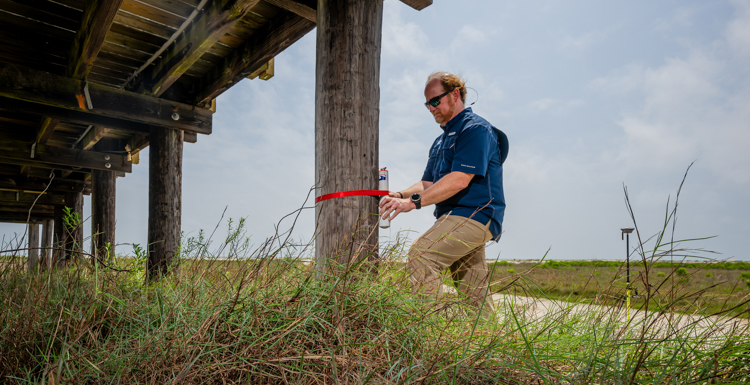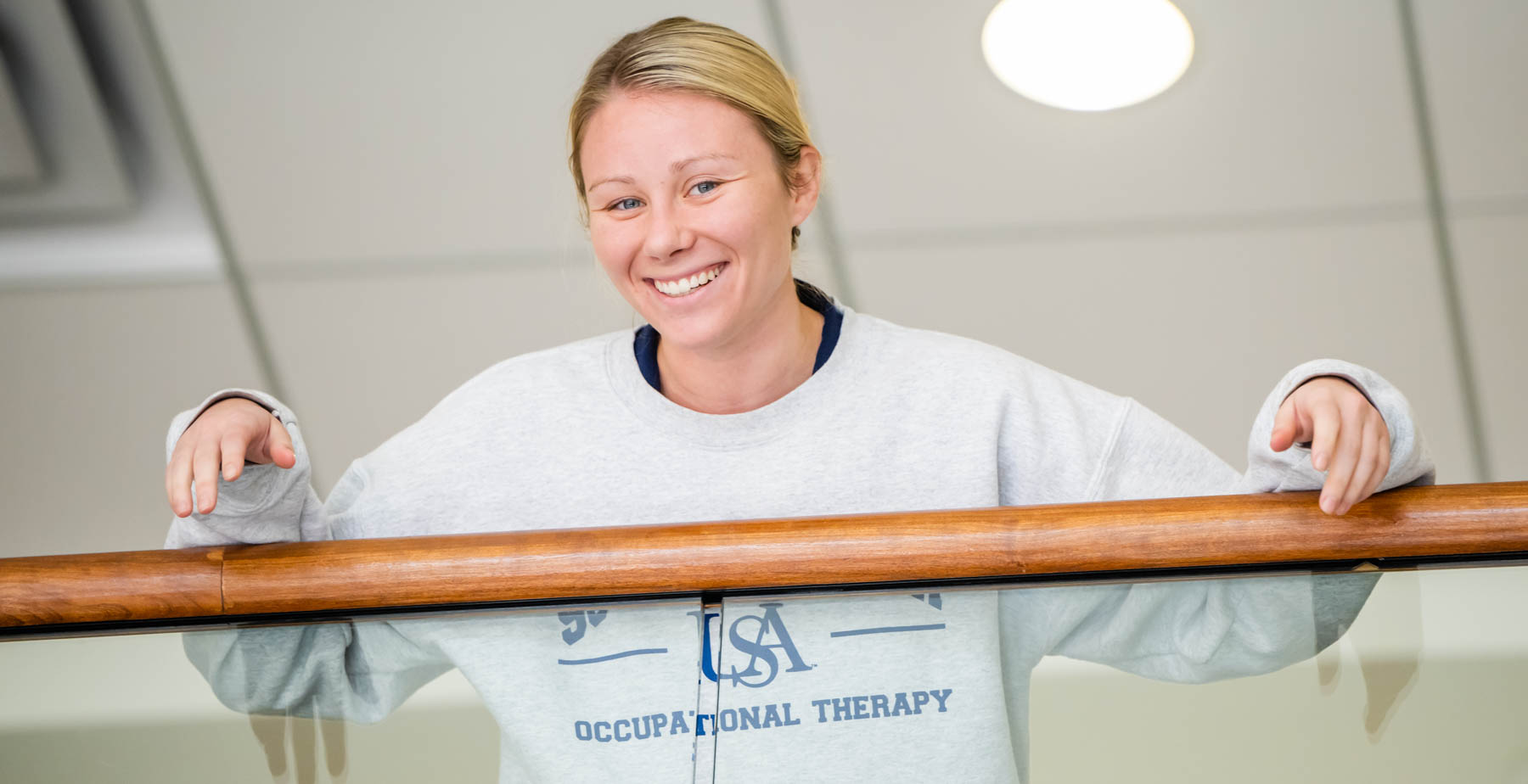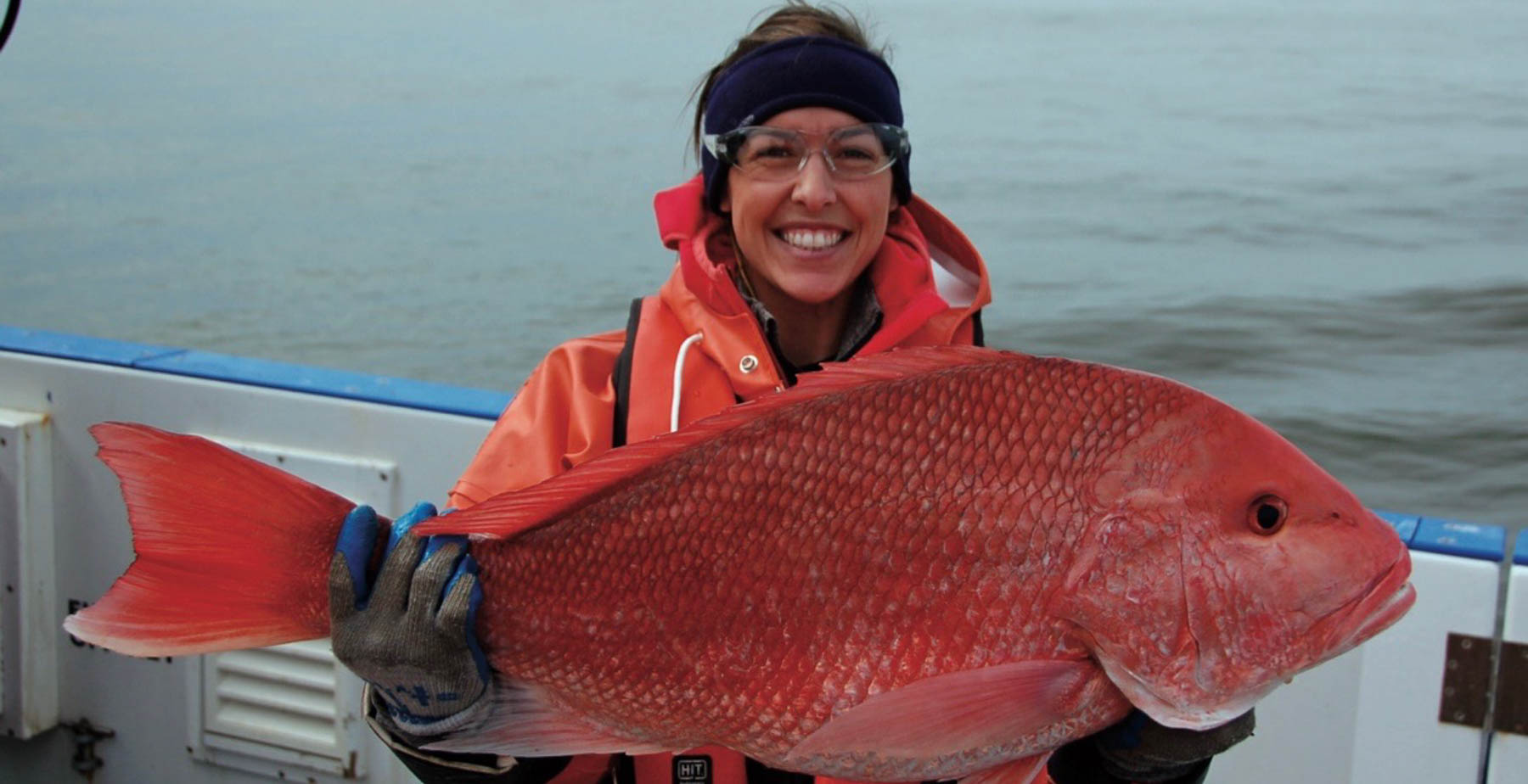Sending Sentinels Into the Storm
Posted on June 14, 2024

This story was originally published in the spring edition of South Magazine, a joint publication of the University of South Alabama and the USA National Alumni Association. Read more online.
While everyone else is fleeing an approaching storm this hurricane season, Dr. Bret Webb and University of South Alabama colleagues will be heading toward it.
Webb, a professor of coastal engineering, doesn’t have a death wish; he has a data wish. He’s part of a research effort that, for the first time, is gathering detailed information about what happens when a hurricane hits the shore. He and his team will set up an array of sensors at the water’s edge, then head to safety before the storm arrives.
“For as much as we know about hurricanes, we don’t have many continuous measurements of surge and waves right at the shoreline during landfall,” Webb says. “We honestly don’t know what happens there during these extreme events.”
Finding out will improve management of coastal threats. South is working with the University of Florida and other institutions, using 33-foot portable masts called Sentinels. Rugged instruments on the mast and the base measure wind speed and direction, wave height, rainfall, barometric pressure, humidity, water temperature and salinity, water quality and more. The Sentinels livestream the readings, along with a video feed, via a cellular signal.
The total project award, about $550,000 over three years, will include money to build one Sentinel, finish construction of another, buy water quality sensors, and pay for faculty, student and staff time. The funding comes from the U.S. Coastal Research Program in conjunction with the U.S. Army Corps of Engineers’ Engineer Research and Development Center.
Crews will trailer the Sentinels to the water’s edge at the projected landfall area of any named storm. Four 19-foot helical piles will screw the base of the mast into the sand. Setup takes just 30 minutes.
The rig can survive and keep transmitting even during a direct hurricane hit, Webb says. The mast is made of carbon fiber by a company that primarily builds masts for high-performance sailboats.
Webb coordinates the network for Mississippi and Alabama. Other research teams cover other stretches of the Atlantic and Gulf coasts. The regional coordinators are responsible for lining up in advance where to deploy the Sentinels — either public lands or private tracts where owners have granted permission.
Three Sentinels are ready to roll, with more being built. “The idea is that they would be spaced at roughly five-mile increments along the coast within the expected landfall area of a hurricane,” Webb says.
His research group at South, which includes an engineering graduate student, plans to augment the Sentinels’ data by deploying its own home-built storm surge and wave gauges nearby. Commercial gauges cost $3,000 each; South’s cost $200.
The bargain price means the team can make lots of them. “So we’re going to either cover a really broad area with a bunch of gauges or focus all of our instruments in one smaller area but collect a lot of high-resolution data,” Webb says.
South has what he calls “a rather robust extreme events deployment group” of faculty and students, concentrated in the Department of Civil, Coastal and Environmental Engineering, who are on call to help set up the instruments as winds and waves kick up from approaching storms.
In other words, South has sentinels to set up Sentinels, in pursuit of knowledge about one of the coast’s most destructive threats.





